Diploma 2018: "I am, you are - a proposal to assemble cultural identities through food culinary venue in Macau, an autonomous Chinese city" by Ying Alice Guan
Tutors: Marco Casagrande (APP), Eva Kun (DAV), Harald Røstvik (Sustainability), Anne Sofie H. Bjelland (TTA)
“What’s more satisfying early in the morning than to see a grandmother with her trolley bag behind, strolling down the street to buy fresh produces and a piece of meat from a wet- and seasonal market? Imagining her walking back with her hunchback and cooking for her beloved husband and grandchildren after the kindergarten.”
Food venue
Food is a powerful resource and tool. It can be related to everything – culture, education, employment, business, community, health,
transport, architecture and so on. The diploma thesis is using food as a tool and to find an approach to assemble cultural identities. By providing a visible venue and using architecture to celebrate food, we create a space for people to contribute an atmosphere and meet each other coincidentally. Because of the increased urbanization, it’s important to be a shared platform for an exchange of knowledge about food exploration, gain cross-cultural awareness, seasonal market, a stage and education about cultivation.
The site is located strategically between the border of the mainland China and the city centre of Macau. Macau is a Special Administrative Region in China which was once part of a post-colonial Portuguese territory. The city is known for “The Las Vegas of the East” - a gambling casino peninsula. The current situation where the enormous resource is entertainment and gambling focusing area, I’m using the constant excitement as my starting point in the project.
Macau Canidrome Club is the only greyhound racing stadium in Asia, that will shut down in July 2018, because of lack popularity and the economic state since it’s earning twenty times less than a horse race. After the current activity fades out, the next step will be giving the possibility for the adoption of the greyhounds internationally, and gradually changing the functions in the stadium to become an
important food setting. The new venue will be the main hub for Macau’s food central and create a new city axis to attract and become a visible movement.
During my study trip, I questioned the consumers and food vendors – all the produces and proteins are transported from the border of mainland China, because of the lack of land for cultivation in Macau. In my intervention, I’m giving the possibility to substitute an intermediary by arriving at the food venue to pick up and having direct awareness of the fresh and seasonal products. As Asia has developed it’s food culture for fresh market and street food, the consumption has soared up – the project gives the possibility for small-scaled business hawker (vendors that can easily be transported and sells inexpensive handcrafts and popular dish) to contribute and open a vendor with their taste of culture.
Identity
In a social gathering sitting around a table with strangers, every individual has something to contribute because of their cultural knowledge and background. It was a defined social border between the local Macanese residents, the mainland Chinese, and the Southeast migrant workers when I visited the city. Different groups are criticizing each other for “they are taking all our jobs”. In today’s
tendency, the Macanese are enhancing the third layer of modernity and the
younger generations are building cultural barriers and creating separate communities even though living side by side. The Macanese society is adapting to the culture of how the West influences the East, which made the territory multicultural and growing rapidly, but clearly in a misguided direction.
Food as a tool
By using food as a tool, it’s easier to approach strangers and forget about the invisible culture barriers. To eat street food along the streets in Asia, you can sit down on a colourful plastic chair slurping a good bowl of noodles with strangers in the middle of the asphalted street – it starts an interaction between the customers. To have an open mind by starting a conversation is challenging, but everybody needs at least one meal to function in the daily life and that glimpse of the second when people sit down – I want to borrow that second and include it as an integral part of the food venue.
What is more satisfying to use food as a communication medium to start a conversation? We need to celebrate food through architecture in order to connect the invisible borders between the temporary and permanent residents of Macau.
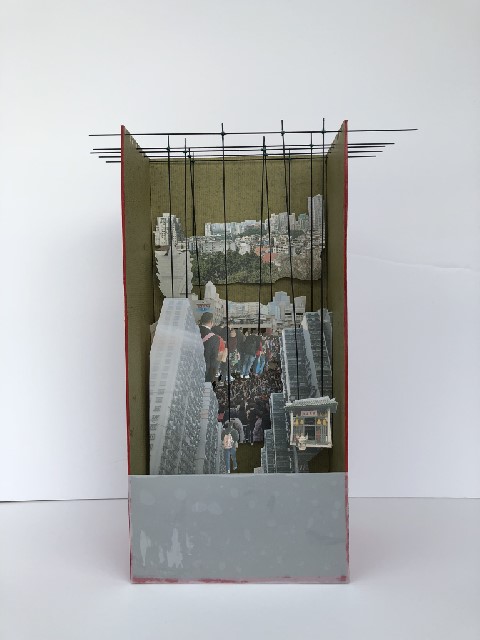
The red box shows the atmosphere of the Macau city.
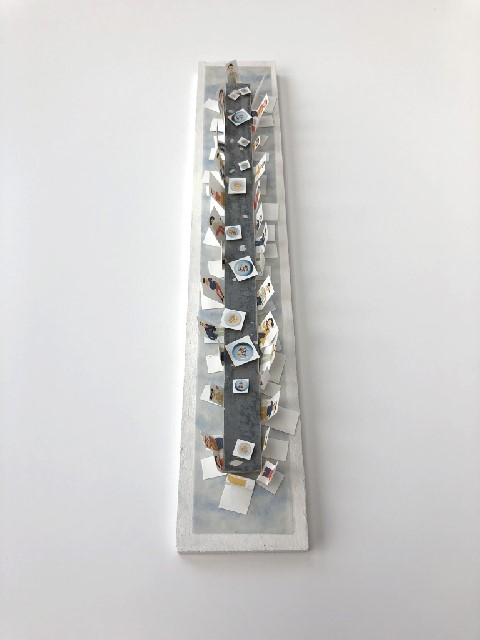
Table is very essential in the diploma project. Concept model.

Plan drawing showing the qualities of the site.
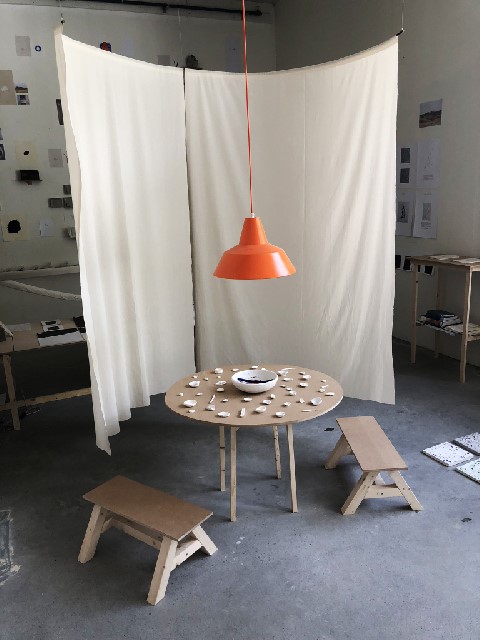
The West and East fusion fine-dining restaurant showing the 1:1 situation with a less formal and tight atmosphere.
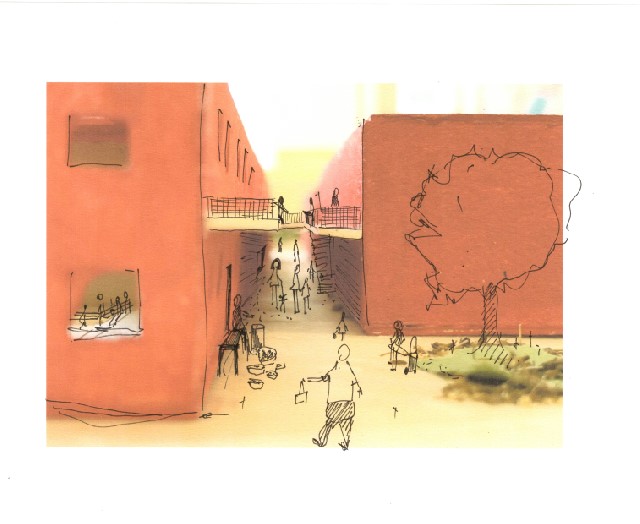
Once these structures were greyhound dog cages, but transformed to intimate cheap street food spaces.
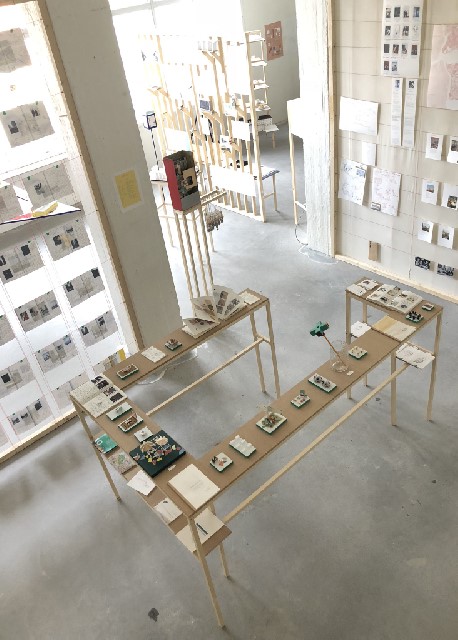
The research and studytrip materials shown above. The table is another 1:1 study of tables eating in a conveybelt restaurant.
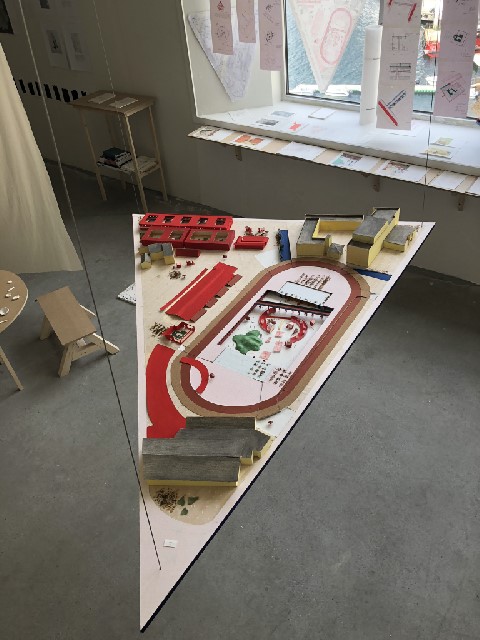
Model in 1:200.
